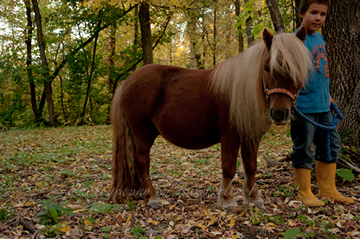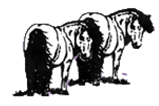
Facts About UK Shetlands

- Shetland ponies are small but are not “mini horses”. They are full sized ponies which we breed to be no more than 36 inches tall even though some are smaller and some larger. We also breed a line of smaller UK ponies who are suited to go into hospitals, senior centers and other "indoor" environments.
- Miniature horses are a man-made breed that does indeed trace back about seven generations to the original UK Shetland. However succeeding generations by miniature horse breeders were determined to breed lovely, refined and beautiful little horses that were more exotic than a UK Shetland. The sterling qualities of the true Shetland were not particularly coveted by miniature horse breeders
- Shetlands are browsers like goats. They are not grazers like most American breeds of ponies and horses. Shetlands prefer to hunt and peck for a living and stay busy. They are happiest when their mouths are finding a blade of grass here and a stem there and a leaf or two over there. Shetland paradise is that. Of course our American pastures are not the hills of heather in Wales or the mountains of Perth. We often suggest piles of hay are scattered all over a paddock so they can wander about and keep moving while they eat.
- Shetland ponies are “wide, round and low to the ground.” They should have a layer of fat over their ribs all year round. They do have slow metabolic rates because their heritage required them to store fat for the times of famish.
- UK Shetlands have a double layer, dense coat and a long, thick mane and tail. Keep in mind that Scotland is well known as the country of dampness, fog and rain. The long straight hair on these unique ponies acts just like rainspouts – channeling the dampness and rain to trickle off of their long straight hair, away from their bodies. This allows the pony to remain dry and warm during the harshest of seasons.
- The Shetlands have a very long and thick forelock that covers their eyes and provides them much needed protection from the sun, harsh wind and the dust and dirt that often go aloft while digging deeply into their hay piles and browsing.
- It is the UK Shetland breed standard to leave them in their truest, most natural forms. We never trim their manes or forelocks or tails and never make a bridle path. In their native land, it was considered an embarrassment to see a Londonderry Shetland with its hair trimmed!
- While black was the predominant color for Shetlands who worked the mines, today there are bays and browns, chestnuts, greys and occasionally a colored Shetland of outstanding quality.




